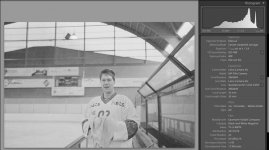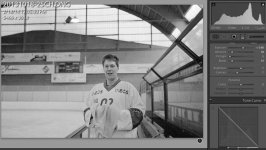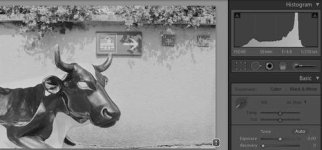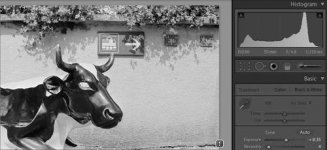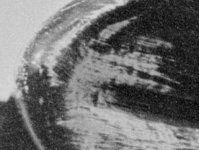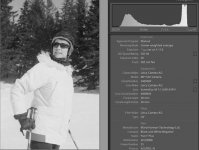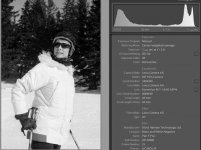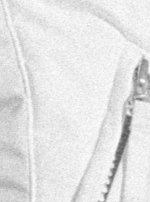JPSuisse
Well-known
Hi All
So, as my two my favorite films Neopan 1600 and PX 125 developed in DD-X have now been "canceled." I had to start looking for a new developer and film combination. My goal is to keep life simple and select a slower and a faster film but only use one chemistry. I want to use thread to write about my observations with ACUROL-N, anybody else that wants to post is welcome to!
My first observations will follow shortly.
John
So, as my two my favorite films Neopan 1600 and PX 125 developed in DD-X have now been "canceled." I had to start looking for a new developer and film combination. My goal is to keep life simple and select a slower and a faster film but only use one chemistry. I want to use thread to write about my observations with ACUROL-N, anybody else that wants to post is welcome to!
My first observations will follow shortly.
John
JPSuisse
Well-known
ACUROL-N and Tri-X
ACUROL-N and Tri-X
I developed this film last week. Woefully outdated Tri-X by at least 4 years... I was shocked by how contrasty the negatives were.
In the first attached image, you can look at the histogram on the right of the image, this is "undeveloped" in Lightroom 4.4.1 and I'm using Process 2003 so that no "adaptive" compensation is applied during the import. It is a straight linear inverted tone curve that is applied during import.
Conditions:
EI 400
15 Minutes development time
20 Degrees C
1+50
30 Seconds First Minute, 1 Agitation Each Following 2 Minutes.
No banging the developer tank as my limited experience shows that this really increases contrast generally...
Commentary:
Such negatives are very easy to develop digitally to get the look I like, see the second image. But if I ever get a darkroom back, I have no clue if these could actually be printed. I did set the RGB scanner exposure using VueScan on my Nikon 5000 at a whopping 3.9.
Conclusions:
Finally, my conclusion is that this combination is ideal for low contrast lighting. (The pictures were taken in an ice rink without so much contrast.) Don't know, if one could use this combination outside in the snow... Maybe I need to develop a little less?
Comments? Other experiences with this combination?
ACUROL-N and Tri-X
I developed this film last week. Woefully outdated Tri-X by at least 4 years... I was shocked by how contrasty the negatives were.
In the first attached image, you can look at the histogram on the right of the image, this is "undeveloped" in Lightroom 4.4.1 and I'm using Process 2003 so that no "adaptive" compensation is applied during the import. It is a straight linear inverted tone curve that is applied during import.
Conditions:
EI 400
15 Minutes development time
20 Degrees C
1+50
30 Seconds First Minute, 1 Agitation Each Following 2 Minutes.
No banging the developer tank as my limited experience shows that this really increases contrast generally...
Commentary:
Such negatives are very easy to develop digitally to get the look I like, see the second image. But if I ever get a darkroom back, I have no clue if these could actually be printed. I did set the RGB scanner exposure using VueScan on my Nikon 5000 at a whopping 3.9.
Conclusions:
Finally, my conclusion is that this combination is ideal for low contrast lighting. (The pictures were taken in an ice rink without so much contrast.) Don't know, if one could use this combination outside in the snow... Maybe I need to develop a little less?
Comments? Other experiences with this combination?
Attachments
Last edited:
JPSuisse
Well-known
RETRO80 S and ACUROL-N
RETRO80 S and ACUROL-N
So, here is the next specimen. RETRO80 S and ACUROL-N.
Conditions:
EI 25
10 Minutes development time
20 Degrees C
1+70
2 Agitations First Minute, 1 Agitation Each Following 2 Minutes.
Commentary:
We have the same situation here as with Tri-X. The negatives are quite contrasty, and here the scene did not help as the cow depicted was black and white in full light. You can see from the historgram of the undeveloped negative that it already has a full range of tones. Not much is needed to complete the development in Lightroom. The negative scans beautifully. There is a lot of detail in the negatives too, although this picture does not give an opportunity to show the detail. I attached a cut-out at very high magnification.
Conclusions:
So far, ACUROL-N looks like a contrasty developer at least at the conditions given in Spur's development datasheet. I am thinking that I am overdeveloping at 10 minutes.
Note:
For digital people following this thread, "developed" in LR simply means adjusted for viewing. I import the image as an unadjusted DNG via Viewscan, so that People can observe the tone range (Tonumfang) that the particular development procedure achieves. The real development here that we are talking about is the chemical development.
Comments are welcome.
RETRO80 S and ACUROL-N
So, here is the next specimen. RETRO80 S and ACUROL-N.
Conditions:
EI 25
10 Minutes development time
20 Degrees C
1+70
2 Agitations First Minute, 1 Agitation Each Following 2 Minutes.
Commentary:
We have the same situation here as with Tri-X. The negatives are quite contrasty, and here the scene did not help as the cow depicted was black and white in full light. You can see from the historgram of the undeveloped negative that it already has a full range of tones. Not much is needed to complete the development in Lightroom. The negative scans beautifully. There is a lot of detail in the negatives too, although this picture does not give an opportunity to show the detail. I attached a cut-out at very high magnification.
Conclusions:
So far, ACUROL-N looks like a contrasty developer at least at the conditions given in Spur's development datasheet. I am thinking that I am overdeveloping at 10 minutes.
Note:
For digital people following this thread, "developed" in LR simply means adjusted for viewing. I import the image as an unadjusted DNG via Viewscan, so that People can observe the tone range (Tonumfang) that the particular development procedure achieves. The real development here that we are talking about is the chemical development.
Comments are welcome.
Attachments
Last edited:
mfogiel
Veteran
Just cut the development time. I've been using Acurol N mainly with slower films ( FP4, RPX100, Acros) at a dilution of 1:90. The developer builds contrast quite slowly at this dilution, so you can really fine tune density with development time.
BernardL
Well-known
Sorry, can't help. Don't know what is an undeveloped negative, never used Process 2003 or Lightroom 4.4.1. To evaluate a negative, I hold it against an overcast sky or a white wall, then try to print it on #2 paper.
JPSuisse
Well-known
Thanks for the comment Marek. Would you agree that the negatives as is is over developed? To me, the histogram shows a very large range, and I think this negative will be difficult to print.
I will make another attempt with RETRO 80S. I was thinking to reduce development time to 9 minutes. Another idea is to reduce the concentration to something like what you say like 1:90.
I will make another attempt with RETRO 80S. I was thinking to reduce development time to 9 minutes. Another idea is to reduce the concentration to something like what you say like 1:90.
mfogiel
Veteran
I prefer to develop to a slightly lower contrast, because I scan, and this way I can avoid clipping and the scanning itself goes faster. A secondary bonus is smaller grain. However your bull negative shows a correct histogram, without curve overflow on the right, so at this point you need to decide if it is OK for your wet printing, and reduce contrast only if this leads to better prints.
Fotohuis
Well-known
It is difficult to get a normal contrast negative with most developers together with this Aviphot 80 E1 Agfa Gevaert / Rollei Retro 80(S) film. So far best results I had with A-49 1+2 or Film Low Gamma (U. Raffay) 1+4 also sold under Rollei Low Contrast. With R09/Rodinal you will get an extreme S-curved logD so not nice in the shadows and certainly not in the high lights (burned out!).
Acurol-N is a high acutance type developer, a kind of super Rodinal. But SPUR is making (too) many developers. Even for me it is difficult to follow all new SPUR developers, modifications and improvements in a short time.
Acurol-N is a high acutance type developer, a kind of super Rodinal. But SPUR is making (too) many developers. Even for me it is difficult to follow all new SPUR developers, modifications and improvements in a short time.
JPSuisse
Well-known
Pan F Plus and ACUROL-N
Pan F Plus and ACUROL-N
And, here we have yet another attempt. I would like to discuss results for Pan F Plus and ACUROL-N.
Conditions:
EI 50
27 Minutes development time
24 Degrees C
1+100
30 Seconds First Minute, 1 Agitation Each Following 3 Minutes
Commentary:
The current datasheet from Spur shows this development should have been used for EI 32 and not EI 50. The unadjusted scan looks for all practical purposes almost good enough. Only very little additional adjustments in Lightroom were needed. This negative was not easy to print in the darkroom. However, it scanned well and there is enormous detail even in the areas that look completely white. See the attached detail picture of the zipper in an all white area! In all fairness, from a dynamic point of view, the scene is as about as difficult as it can get (a ski slope in the shining sun with a dark wooded background!)
Conclusion:
Once again, to me, the negative looks overdeveloped using, what is at least pretty close to Spur's recommendations. The result is contrasty but easy to use in a digital workflow with an enormous dynamic range and very high resolution. But, not so easy to use in the darkroom for a purely analog process. I did try to wet print this and it was not so easy. As I am looking for the ability to finish either digitally or analogue, I have to somehow systematically start reducing the contrast using this developer.
Again, comments are welcome!
Pan F Plus and ACUROL-N
And, here we have yet another attempt. I would like to discuss results for Pan F Plus and ACUROL-N.
Conditions:
EI 50
27 Minutes development time
24 Degrees C
1+100
30 Seconds First Minute, 1 Agitation Each Following 3 Minutes
Commentary:
The current datasheet from Spur shows this development should have been used for EI 32 and not EI 50. The unadjusted scan looks for all practical purposes almost good enough. Only very little additional adjustments in Lightroom were needed. This negative was not easy to print in the darkroom. However, it scanned well and there is enormous detail even in the areas that look completely white. See the attached detail picture of the zipper in an all white area! In all fairness, from a dynamic point of view, the scene is as about as difficult as it can get (a ski slope in the shining sun with a dark wooded background!)
Conclusion:
Once again, to me, the negative looks overdeveloped using, what is at least pretty close to Spur's recommendations. The result is contrasty but easy to use in a digital workflow with an enormous dynamic range and very high resolution. But, not so easy to use in the darkroom for a purely analog process. I did try to wet print this and it was not so easy. As I am looking for the ability to finish either digitally or analogue, I have to somehow systematically start reducing the contrast using this developer.
Again, comments are welcome!
Attachments
Roger Hicks
Veteran
On my internet monitor (which is of abysmal quality), the images appear simultaneously muddy and contrasty. This shouldn't happen, but sometimes it does. I had a similar problem with Acros when it first came out: it took me half way to forever to get acceptable negs from fiddling around with EIs, times and (this is getting desperate) dilutions.
My suspicion is that you'd do a lot better to change films or developers or both, rather than continuing to bang your head against this particular brick wall.
I have to confess that I am totally empirical about film development, and that I develop only for wet printing: as I almost never scan B+W 35mm negs, I just don't worry about optimising for both. This means that my negs are both contrasty and grainy for scanning -- but as I don't scan, I don't care.
The best negs I have ever found for both scanning and wet printing are XP2 Super and I would quite seriously suggest that you consider this. You can process C41 at home, which would also give you the advantage of being able to wash it properly: I have some old XP-1 negs, in particular, that have gone very funny colours indeed after commercial processing.
Sorry I can't be more help.
Cheers,
Roger
My suspicion is that you'd do a lot better to change films or developers or both, rather than continuing to bang your head against this particular brick wall.
I have to confess that I am totally empirical about film development, and that I develop only for wet printing: as I almost never scan B+W 35mm negs, I just don't worry about optimising for both. This means that my negs are both contrasty and grainy for scanning -- but as I don't scan, I don't care.
The best negs I have ever found for both scanning and wet printing are XP2 Super and I would quite seriously suggest that you consider this. You can process C41 at home, which would also give you the advantage of being able to wash it properly: I have some old XP-1 negs, in particular, that have gone very funny colours indeed after commercial processing.
Sorry I can't be more help.
Cheers,
Roger
mfogiel
Veteran
I would advise to apply the following rules:
1- expose at 2/3rds of box speed
2- use films that give full range of tones - examples would be : Tri X, HP5+,TMY, Delta 400, FP4+, RPX 100, Adox CHS II, Adox Silvermax, Delta 100, TMX.
3- develop at 75% recommended time for normal exposure as a starting point
1- expose at 2/3rds of box speed
2- use films that give full range of tones - examples would be : Tri X, HP5+,TMY, Delta 400, FP4+, RPX 100, Adox CHS II, Adox Silvermax, Delta 100, TMX.
3- develop at 75% recommended time for normal exposure as a starting point
Roger Hicks
Veteran
I'd sort of agree but would add:I would advise to apply the following rules:
1- expose at 2/3rds of box speed
2- use films that give full range of tones - examples would be : Tri X, HP5+,TMY, Delta 400, FP4+, RPX 100, Adox CHS II, Adox Silvermax, Delta 100, TMX.
3- develop at 75% recommended time for normal exposure as a starting point
1 Depending on how you meter
3 No, I'd start with the manufacturer's recommendations for wet printing, and not drop to less than about 85% as a starting point even for scanning.
As someone at Ilford once said to me, "Why do people think we'd recommend the wrong developing times? Spite? Or because we don't want people to get the best results from our films?"
Cheers,
R.
JPSuisse
Well-known
Gentlemen, thanks a lot for this input! I have Delta 3200 in the camera right now, but my next test was going to be with RPX100. Then, I will try something like what is mentioned.
Roger, the pictures were made from screen shots. The only valuable information is the impression of contrast and the histogram. I can imagine that they look both muddy and contrasty but on my monitor in Lightroom they look quite detailed and not muddy.
Neither Ilford nor Kodak give any guidelines for the use of ACUROL-N. So, I have to figure it out myself. It appears to me that Spur understates the "contrastiness" of this developer.
As a remark, I am very much a beginner. This whole experiment started when Fuji and Kodak canceled my favorite films (Neopan 1600 and 125PX) which worked well with DDX as recommended by Ilford/Kodak/Fuji.
Roger, the pictures were made from screen shots. The only valuable information is the impression of contrast and the histogram. I can imagine that they look both muddy and contrasty but on my monitor in Lightroom they look quite detailed and not muddy.
Neither Ilford nor Kodak give any guidelines for the use of ACUROL-N. So, I have to figure it out myself. It appears to me that Spur understates the "contrastiness" of this developer.
As a remark, I am very much a beginner. This whole experiment started when Fuji and Kodak canceled my favorite films (Neopan 1600 and 125PX) which worked well with DDX as recommended by Ilford/Kodak/Fuji.
John Bragg
Well-known
It seems to me that trying to change films and developer at the same time is putting you on a hiding to nothing. Perhaps keep using DDX, as it has been successful for you, and try films that may work with it. Perhaps Delta3200 for the fast option and FP4+ or Delta100 for the slow one ? Trying to change all the parameters at once will just frustrate and disappoint.
ashfaque
Learning
If I understand correctly, SPUR chemicals are purely geared towards full analogue system - i.e., enlarger print. But if you want to scan your images and don't want to wet print, or don't want to fine tune them on the computer, you'll have to reduce the development time or increase the dilution (assuming your light meter is working fine).
Somewhat related to Retro 80s: It is a really sharp film, but quite hard to control contrast. If you want to shoot at box speed (or higher ISO) then Acurol-N won't do. You could try one of these
(1) Rodinal 1:200 full stand 1 hour, instruction and examples -- my favourite, so far.
(2) Diafine @ 200. See instructions & e.g.s posted here by inetjoker as they're slightly different. The flickr thread has some other interesting examples as well.
(3) CG 512 sold by Moersch, (aka Rollei RLS).
(4) You can make R110 (by Jay DeFehr), a more general purpose developer for Retro 80S (@ ISO 80) as follows:
Jay recommended me to try R110/R110R, whilst I was seeking some help for Adox CMS 20 II (another lovely but PITA film). I haven't tried it, but in all likelihood it should be quite good as it is a very low contrast developer.
Do let us know if you try R110+ Retro 80s combo.
Bests,
Ashfaque
Somewhat related to Retro 80s: It is a really sharp film, but quite hard to control contrast. If you want to shoot at box speed (or higher ISO) then Acurol-N won't do. You could try one of these
(1) Rodinal 1:200 full stand 1 hour, instruction and examples -- my favourite, so far.
(2) Diafine @ 200. See instructions & e.g.s posted here by inetjoker as they're slightly different. The flickr thread has some other interesting examples as well.
(3) CG 512 sold by Moersch, (aka Rollei RLS).
(4) You can make R110 (by Jay DeFehr), a more general purpose developer for Retro 80S (@ ISO 80) as follows:
R110
Sodium sulfite 85
Hydroquinone 1
KBr 1
Borax 1
Phenidone 0.1
R110R (replenisher for R110)
Sodium sulfite 85
Hydroquinone 1.6
Borax 2
Phenidone 0.2
Develop most films 5:00 - 6:00, 70F
Jay recommended me to try R110/R110R, whilst I was seeking some help for Adox CMS 20 II (another lovely but PITA film). I haven't tried it, but in all likelihood it should be quite good as it is a very low contrast developer.
Do let us know if you try R110+ Retro 80s combo.
Bests,
Ashfaque
Last edited:
john_s
Well-known
........As someone at Ilford once said to me, "Why do people think we'd recommend the wrong developing times? Spite? Or because we don't want people to get the best results from our films?"
Cheers,
R.
We reach our optimum exposure indices and development regimes over the years. (At least, it took me years, in the days before the information and opinions now available on the internet, for good or ill sometimes)
One reason that manufacturers might suggest more development that many of us prefer is that in the competitive race for higher film speeds a bit more development can force the apparent speed up a bit. Maybe some manufacturers are worse than others in this regard, and tastes in prints vary as do metering techniques. There is no way these days I would set the ISO on a camera with matrix or centre weighted meter at the manufacturer's "box speed", and "point and shoot" and then develop in their recommended developer for their recommended time unless I wanted to do something akin to push processing because that is what it is in my opinion.
My taste in prints? Not shadowy eye sockets in portraits.
Roger Hicks
Veteran
Highlight: Sorry, but that's complete nonsense. Do you understand how ISO speeds are calculated? Read http://www.rogerandfrances.com/subscription/ps iso speeds.html and you might have a slightly better idea.We reach our optimum exposure indices and development regimes over the years. (At least, it took me years, in the days before the information and opinions now available on the internet, for good or ill sometimes)
One reason that manufacturers might suggest more development that many of us prefer is that in the competitive race for higher film speeds a bit more development can force the apparent speed up a bit. Maybe some manufacturers are worse than others in this regard, and tastes in prints vary as do metering techniques. There is no way these days I would set the ISO on a camera with matrix or centre weighted meter at the manufacturer's "box speed", and "point and shoot" and then develop in their recommended developer for their recommended time unless I wanted to do something akin to push processing because that is what it is in my opinion.
My taste in prints? Not shadowy eye sockets in portraits.
This is not to say that ISO speeds are perfect. The Japanese have long argued for a lower standard gamma. Some manufacturers use speed-increasing developers, but still with ISO criteria for shadow detail contrast. Even so, to pretend that some manufacturers "push" their films via extra contrast simply betrays an utter ignorance of what ISO speeds are.
Cheers,
R.
mfogiel
Veteran
FWIW, I've just developed a roll of HP5+ @EI 500. 5ml of developer/450cc tank ( 1:90), 20deg C, 30 secs continuous agitation, thereafter 4 inversions (no banging) every 5 mins for a total of 45 mins. The density is OK, the grain is visible but tight, there is slight fog but not much - you could probably make it 5 mins shorter.
john_s
Well-known
Highlight: Sorry, but that's complete nonsense. Do you understand how ISO speeds are calculated? Read http://www.rogerandfrances.com/subscription/ps iso speeds.html and you might have a slightly better idea.
This is not to say that ISO speeds are perfect. The Japanese have long argued for a lower standard gamma. Some manufacturers use speed-increasing developers, but still with ISO criteria for shadow detail contrast. Even so, to pretend that some manufacturers "push" their films via extra contrast simply betrays an utter ignorance of what ISO speeds are.
Cheers,
R.
I could have expressed this in a better way. I do know that there is a standard for determining ISO. I think that lower gamma suits me better, and I'm perhaps in a minority but still a sizeable minority in setting my meters on a lower than ISO number and developing a bit less than manufacturers recommend. I'm talking about black and white negatives here. So we might at least share some common ground in not beliveing that "ISO speeds are perfect."
I remember reading that in the past, the standardised film speeds had some leeway for underexposure, but that now there isn't that leeway. Although I may seem to be "utterly ignorant" I do know what I like, and that is negs that are relatively easy to print and that suit modern VC papers (which I think perform better with a slightly softer negative).
Roger Hicks
Veteran
Dear John,I could have expressed this in a better way. I do know that there is a standard for determining ISO. I think that lower gamma suits me better, and I'm perhaps in a minority but still a sizeable minority in setting my meters on a lower than ISO number and developing a bit less than manufacturers recommend. I'm talking about black and white negatives here. So we might at least share some common ground in not beliveing that "ISO speeds are perfect."
I remember reading that in the past, the standardised film speeds had some leeway for underexposure, but that now there isn't that leeway. Although I may seem to be "utterly ignorant" I do know what I like, and that is negs that are relatively easy to print and that suit modern VC papers (which I think perform better with a slightly softer negative).
Yes, you could have phrased it better, but I must apologize for my somewhat snappish response. Its origin lies in arguing with those "Zonies" who maintain that films aren't "really" as fast as their ISO speeds. I also have a problem with a blanket recommendation of reduced development.
Many people (me included) prefer the tonality they get from slight overexposure, and cheerfully take the hit on bigger grain and reduced sharpness.
On the other hand, I've been developing and printing for several decades and my enlargers (Meopta and MPP) both do best with films developed for the recommended time. It is therefore dangerous for you to generalize from your personal experience about what's "easy to print" (which is, after all what we all want). You could argue that equally, I'm generalizing from my experience, but as my experience matches the manufacturers' recommendations...
Oh: and yes, there used to be a (roughly) one stop "safety factor" but it was dropped in about 1960. You will not be surprised to learn that until then, film manufacturers were often accused of not being honest with their film speeds.
Cheers,
R.
Share:
-
This site uses cookies to help personalise content, tailor your experience and to keep you logged in if you register.
By continuing to use this site, you are consenting to our use of cookies.

